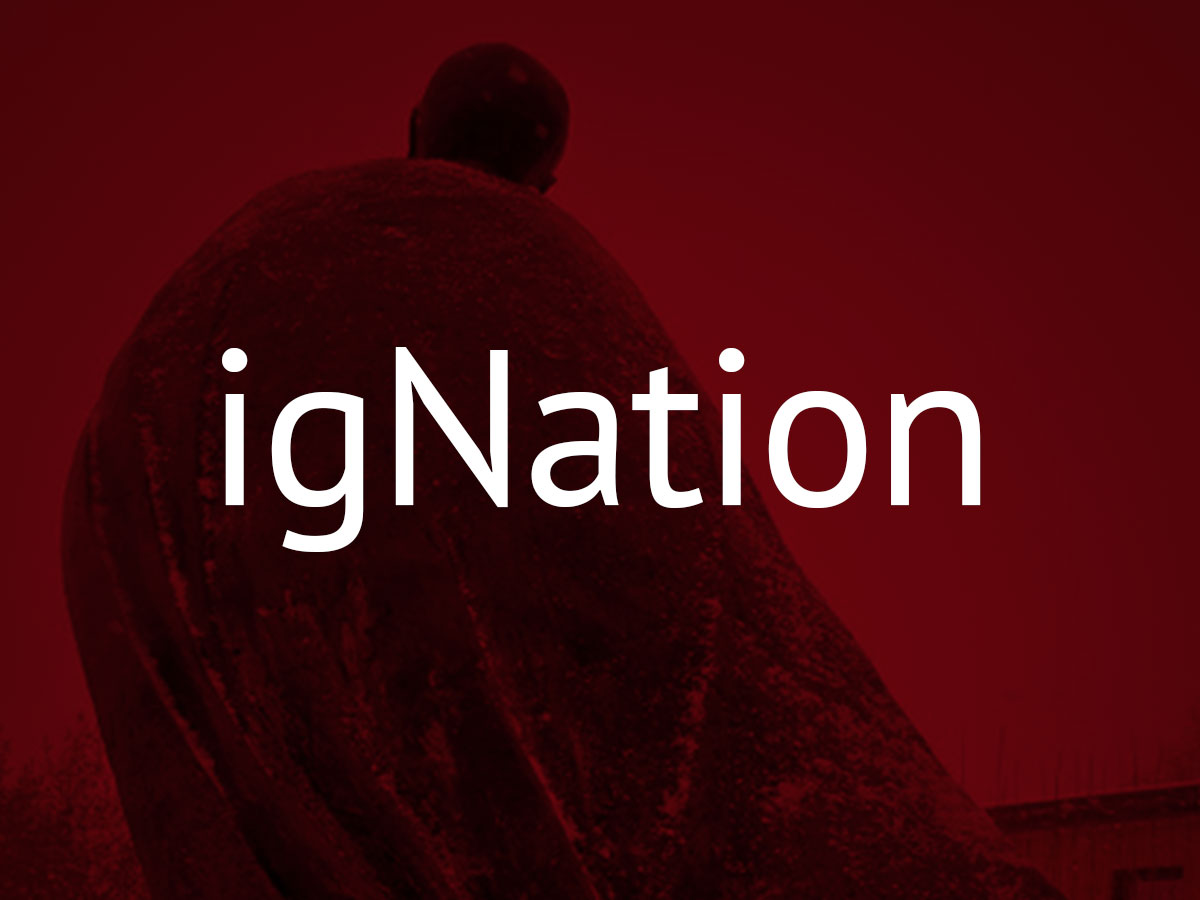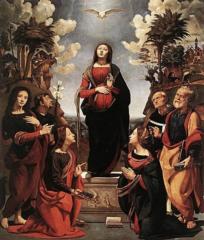Waiting: Where We Are Now – Four Reflections for Advent 2015 – (2) The Incarnation

2: The Incarnation, The Annunciation
This exercise has two parts: the Divine Presence’s concern for the world and their decision to do something at the right time; and the human response of Mary at the Annunciation.
 (1) The Incarnation
(1) The Incarnation
Scripture verse
Who is like the Lord, our God,
Who is seated on high,
Who looks far down
Upon the heaven and the earth?
He raises the poor from the dust,
And lifts the needy from the ash heap,
To make them sit with the rulers,
With the rulers of his people.
He gives the barren woman a home,
Making her the joyous mother of children.
Praise the Lord!
(Psalm 113)
From the Spiritual Exercises
The Three Divine Persons look upon the whole expanse or circuit of all the earth, filled with human beings. Since they see that all are going down to hell, They decree in Their eternity that the Second Person should become man to save the human race. (Sp. Ex. #102)
Grace to be prayed for
This is to ask for what I desire. Here it will be to ask for an intimate knowledge of our Lord, who has become human for me, that I may love Him more and follow him more closely. (Sp. Ex. #103)
What are the ways in which we imagine the world? What are our closed and broken myths — shaped by our past, the way we live now, and how we view the future? What happens when we bring these to God?
Imagining the World
How are we are present to ourselves, to others, and to the world? The Hindu Scriptures say that we are like the spider. We weave our life and then move along in it. We are like the dreamer who dreams and then lives in the dream. This is true for the entire universe (Aitareya Upanishad). We live in our imagined worlds as if they were real. But we can also have some awareness of how our imagined worlds are misconstructed by sin. Yet we are not destroyed. We and all of creation is held in a love that goes beyond our understanding. How to see, and acknowledge that love? How to cooperate with it? But to do this we first need to realize that it is within our power to do so.
If we look around, even where we are now, everything we see or feel or hear was first a product of the imagination. The process of transforming that imagined entity to a sensible reality also requires an imaginative process. When our imaginations are frozen, we end up with the notion that reality cannot be changed. When our imaginations are subverted by evil, we create distorted forms of reality. But when our imaginations are liberated by God, we imagine as God imagines, and create as God creates.
When we are trapped by sin, all we can see is sin, and the way we imagine we can free ourselves is in itself sinful. Sin traps us in ways beyond any form of self-help. One of the first steps in our liberation is realizing our radical helplessness. We cannot save ourselves. When we accept this fact, we grow to understand that, despite our helplessness, we are not destroyed. We see that there is a power at work in our lives and in our world that is larger than the forces of destruction. It is the power of love. The work of love is to liberate those trapped energies of our imagination so that we can see and experience ourselves as God sees and experiences us.
This liberation is present in the first part of this exercise, where we are asked to imagine being in the very presence of God as the three persons of the Trinity contemplate the disordered state of our world. The divine energies of love, manifest in the Father, the Son, and the Holy Spirit, are not detached, dispassionate omni-powers. They are the fullest manifestations of an involved and concerned Love that creates constantly, sustains without ceasing, and redeems always by entering into the traps of sin and death to bring all, in their patient wisdom, to the process of resurrection. God knows that we, and our worlds, are still being created. We are invited to co-operate in that creation. That process transforms evil into good by entering into the afflicted dimensions of creation.
Seeing as God Sees
In this contemplation, we are asked to share the perspective of the three Divine Persons of the Trinity as they look at the state of the world. They are not filled with moral disgust at the desperate state of humanity; rather, they determine that the best way for us to be saved is for one of them to become one of us. In this way we can see that it is still possible – despite the terrible straits we are in, and the illusions to which we enslave ourselves – to realize our union with God. The deceptions we are mired in either suggest to us that this is not possible, or offer erroneous ways to achieve that reality. These only increase our frustration and despair. As we have already discovered, we cannot liberate ourselves. How can we be human without being mastered by sin? The question is this: How can we be ourselves and yet be beyond ourselves?
The Trinity’s solution to this question is the Incarnation. God enters into the human condition, into created history, to show us that we can enter into God’s condition, God’s creativity, and God’s very life. The Trinity offer us the gift of themselves, and they offer the way for us to receive and open, live and share that gift. They show us how to be most fully human.
Because of this action of God, we are given the opportunity to become most truly ourselves by going beyond how we see ourselves. We see ourselves with the possibilities God always sees in us and calls us to. The gift of the Incarnation, of God becoming human, allows us to become fully human. We do this by becoming companions and intimates of that human God. The gift of love, when we accept it, makes us truly loving. In love we grow in our connection to ourselves, to all others, and to God.
Questions for Prayer and Reflection
1. Do you think that reality cannot be changed? Is that because you confuse the familiar with the real?
2. What aspects of your reality would you like changed? How would those changes concretely help build up a more compassionate society?
3. Given your present situation, what are the necessary steps to do that? Are those ways within your power?
4. What would you need to help create that more human world? What gifts would those be?
5. How do you receive gifts?
6. How do you open gifts?
7. How do you use gifts?
8. How do you share your gifts? Have you ever been given a gift that you did not know existed? That you did not know how to ask for? What was it?
9. Have you even been in love?
10. Have you ever loved anyone – not for yourself, but just for that other person?
11. What is/was it like?
12. How does it keep changing your life?
13. In this prayer period, what does it feel like to enter into the imagination of God?
14. How do you feel as you become a part of the Trinity’s decision not to give up on, humankind? If you were to talk to the Trinity about their decision, what would these conversations and your concerns be about?
We are invited to co-operate with God for good to happen in this world. God does not choose to work without us. Have we ever felt invited to such a thing? God enters the world through human faces, hands, and works. When God enters our world through the nativity, it happens because a human being, Mary, said yes to God’s invitation. Before we consider the Nativity, we need to look at the Annunciation, which made the Nativity possible.
+++++++++++++++++++
Unless otherwise indicated all photos are by Brendan McManus, SJ




No Comments